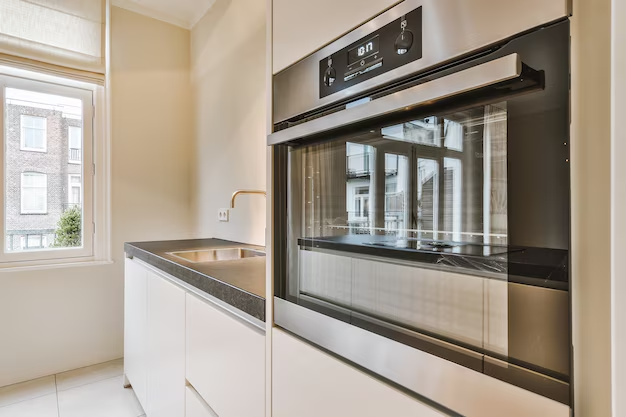How Much Electricity Do You Need to Power Your Refrigerator?
In every home, the refrigerator stands as a constant hum in the background—faithfully preserving your food and drinks day and night. But have you ever paused to wonder how much power this essential appliance really consumes? Fridges are indispensable, yet their energy consumption can often go unnoticed. Understanding the power needs of your refrigerator can lead to smarter energy use and help save both electricity and money.
The Basics of Refrigerator Power Consumption
What Determines Refrigerator Energy Use?
Various factors can influence how much electricity your refrigerator uses:
Age and Model: Older models tend to consume more energy compared to modern, energy-efficient designs. This is because innovations in design, insulation, and compressor technology have significantly reduced the power demand.
Size: Naturally, a larger refrigerator requires more energy to maintain the cool temperature throughout the increased volume. Compact models may use less power but might not always satisfy a large family's needs.
Usage Patterns: Frequent opening and closing of the fridge door injects warm air inside, making the compressor work harder to restore the set temperature. This increased effort results in higher energy consumption.
Ambient Temperature: A refrigerator placed in a hot environment, such as near direct sunlight or a heat source, will need to work more aggressively to keep its contents cool.
Common Power Ratings
Refrigerators are generally rated in watts. The typical household fridge might have a power rating of between 100 and 800 watts, depending on the factors mentioned above. It's essential to note that these ratings specify the power draw when the compressor is running. Since the compressor doesn't run continuously but in cycles, the actual power draw over time is often much lower.
Estimating Yearly Energy Use
Understanding the Energy Star Label
When buying a new refrigerator, one clear indicator of energy efficiency is the Energy Star label. Appliances with this certification meet strict criteria for energy use, ensuring you get a unit that isn't overly taxing on your utility bill. Using this label, you can easily estimate annual energy consumption, typically expressed in kilowatt-hours (kWh).
Calculation Formula
To calculate the energy consumption of your refrigerator, you can use the formula:
Energy Consumption (kWh) = (Wattage × Hours Used Per Day) ÷ 1000 × Number of Days in Use
For example, if your refrigerator consumes 300 watts and runs for 8 hours every day, your monthly energy usage would be:
[ (300 , ext{watts} imes 8 , ext{hours/day} imes 30 , ext{days}) div 1000 = 72 , ext{kWh} ]
Economic Impact
Electricity costs vary, but assuming an average rate, your monthly refrigerator expense can easily be estimated. By knowing this, you can make informed decisions, such as switching to an energy-efficient model or adopting better usage practices.
Practical Tips to Save on Refrigerator Energy Use
When it comes to optimizing appliance energy efficiency, here are some practical tips to get started:
Proper Refrigerator Placement
Position Wisely: Keep your fridge away from heat sources, including direct sunlight, radiators, or ovens. A location with proper ventilation helps the refrigerator function efficiently.
Leveling: Ensure that the fridge is level. If the doors don't seal properly, your fridge will work harder to maintain cold air inside.
Improve Storage Efficiency
Moderate Stocking: Avoid overloading or underloading your fridge. Overloading can block airflow, while underloading can cause temperature irregularities.
Organized Storage: Organizing your groceries efficiently minimizes the time the door stays open, reducing the amount of warm air entering the fridge.
Maintenance for Energy Efficiency
Clean the Coils: Dusty condenser coils can hinder your refrigerator’s efficiency. Cleaning them annually maintains optimal performance.
Check Door Seals: Regularly inspect door seals (gaskets). If they are cracked or worn, replace them to prevent cool air from escaping.
Temperature Settings: Setting the refrigerator to the manufacturer's recommended temperature (typically 37-40°F) and the freezer at 0°F prevents excess energy use.
Other Appliances and Their Impact
Refrigerator Alternatives and Innovations
While refrigerators are indispensable, complementary technologies and innovations are emerging to supplement their usage:
Mini Fridges: Ideal for small spaces or single-person households, these units consume less energy and space but come with limited capacity.
Smart Refrigerators: Equipped with advanced features like energy usage tracking and optimization tips, they help consumers make smarter decisions regarding consumption.
Solar-Powered Fridges: These are particularly useful in remote areas lacking a stable electricity supply, and innovations are ensuing in greener, sustainable power solutions.
The Broader Landscape: Reducing Household Energy Use
While focusing on refrigerators, it's essential not to overlook the overall energy footprint of your household. Simple strategies, such as investing in energy-efficient lighting, using programmable thermostats for heating and cooling, and ensuring good home insulation, can significantly reduce overall energy consumption, leading to consistent savings.
In Summary: Fast Facts & Tips for Efficient Refrigerator Use
Maintaining an energy-efficient environment in your kitchen is easier with a few fundamental practices. Here's a handy quick-reference list to keep your refrigerator running optimally:
- 🔄 Regular Maintenance: Clean coils annually and check door seals to prevent energy leaks.
- 🌡️ Ideal Temperatures: Keep your fridge at 37-40°F and freezer at 0°F.
- 🚪 Mind the Door: Minimize door opening time to keep warm air out.
- 🌞 Smart Placement: Keep the fridge away from heat sources to enhance efficiency.
- 🌿 Consider Upgrades: Evaluate if switching to an Energy Star model or a smart refrigerator could offer long-term savings.
Understanding and managing the power needs of your refrigerator empowers you as a consumer to make educated decisions that can benefit both your wallet and the environment. By adopting efficient practices and considering modern alternatives, maintaining a cost-effective kitchen becomes not just achievable but straightforward.
